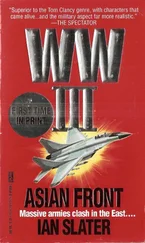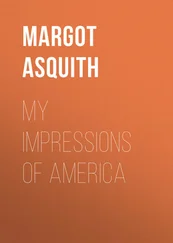1 ...6 7 8 10 11 12 ...19 This book is organized into three parts. Part I, “Framing Asian America,” of which this Introduction is part, is the “framing” section of the book, meant to sketch out the key analytic framework and historical context through which to then approach subsequent chapters. In chapter 2, “Race, Ethnicity, Gender, and Sexuality,” we explain how Asian Americans experience race in particular, along with gender and sexuality, which future chapters then elaborate upon. The chapter first defines key terms and reviews the dominant Asian-American stereotypes: the “model minority” and “yellow peril” (including the post-9/11 “terrorist”); the geisha and dragon lady; and the effeminate gay and nonexistent lesbian. Beyond reviewing the stereotypes, the chapter explains how race, gender, and sexuality operate within the larger constructs of the nation, patriarchy, capitalism, and imperialism. Substantive issues that demonstrate these hierarchies include hate crimes (most notably the murder of Vincent Chin), the exotification of gay Asian men, the treatment of other minorities relative to Asian Americans, and more.
In chapter 3, “Arrival and History,” we review major historical episodes and explain the arrivals and major changes of each ethnic group, including gender differences between them. In particular, why did Asians come to the United States in the 1800s and later construct bachelor societies? How were Asian Americans treated legally and how did they contest that, including Japanese-American internment? How did Asian Americans move discursively from a despised to an admired minority post World War II? Why did the United States invade the Philippines and with what impact on Filipinx emigration? What were the social protests of the late 1960s? Why did Asians arrive after 1965 and as refugees tied to US imperialism? And what occurred during the 1992 Los Angeles riots involving Korean Americans? In explaining this progression of topics, the chapter argues that Asian Americans have been brought in as labor, as seen within immigration laws, and often constructed as threats. This is not to say that Asian Americans have not benefited from the process. But this colonial dynamic disrupts the immigrant narrative of the United States having fairly incorporated immigrants.
Part II, “Identities and Exclusion,” focuses on the ways Asian Americans understand their own identities and they negotiate the ways their identities are constructed in American society. “Media and Popular Culture,” in chapter 4, are tools for promoting identities and discourses on minority groups and for contesting those same things. This chapter explains both ends of this issue. The media, for this purpose, consist of film, television, print (i.e. magazines and newspapers), theater, and internet. They are a key institution for the production, dissemination, and consumption of popular culture such as music, sports, or fashion. The chapter starts with a sociological discussion of the media as a social institution to appreciate how they function. It then examines key questions within this topic: how have Asian Americans been depicted in the media over time? What have their reactions been to those depictions (e.g. protests or appreciation)? What do Asian-American performers think of their performances? What images are presented within Asian Americans’ own artistic creations? These questions inform the relationship of minorities to the media more broadly. The chapter argues that fuller images of Asian Americans today are due to the increased presence of Asian Americans as a consuming market, but that Asian Americans’ productions offer more nuanced portrayals.
Chapter 5, “Identity,” examines self-identity, which is a major topic for all people but in particular for college-age students. Why do people choose one identity/ies over another (e.g. ethnic over American identity, or prioritize the ethnicity of one of their parents over another), how do they express identities, and how do they deal with multiple identities? These are central issues within social science literature on identity, which Asian America can speak to. The chapter reviews these theoretical topics for the 1.5 and second generation of many ethnic groups. While the chapter is grounded in sociology, it brings in both psychology and cultural studies. Considerable space is given to whether Asian Americans construct pan-ethnic and transnational identities as well. In reviewing the literature, the chapter moves past the notion of a “cultural conflict” or “marginal man” to describe those with dual identities, and instead argues that individuals bring together their identities in creative ways. The implications of identity styles for adaptation broadly are discussed.
In chapter 6, “Belonging and Exclusion,” we ask whether Asian Americans are thought about and treated as if they belong to the United States. That is, we consider whether they have become full citizens of the United States along legal, social, and cultural dimensions. Citizenship pertains first and foremost to its legal definition, and more Asian Americans than is typically recognized live without full legal status. However, there are other aspects of citizenship that relate to notions of belonging. There are also many Asian Americans who possess legal citizenship and yet may still experience a sense of non-belonging in this country, even though they may have been born here. The United States as a restrictive, neoliberal state becomes more apparent through the lens of citizenship. In what ways has legal citizenship been denied to Asian Americans historically? How do Asian Americans claim a social and cultural belonging, even when they are legal citizens, when they are depicted as foreigners, associated primarily with co-ethnics, and join social and cultural associations, most notably religious ones? In the process of elucidating these trends, the broader meaning of citizenship within a global system is explained. The chapter gives significant attention to the institution of religion and to the cultural practices of the second and later generations. It is argued that most Asian Americans try to become full citizens by performing “American” practices and by embracing their background in a multicultural manner, that is, by showing a respect for those cultural differences that support a dominant (mostly Anglo) culture and neoliberal status in the public sphere.
If chapter 6examined Asian Americans’ constructions as citizens in relation to dominant notions of belonging and exclusion, chapter 7, “Interracial Relations,” examines how Asian Americans connect and relate to other racialized, nonwhite groups. The guiding question for this chapter is when do people of color come together across group lines and when are their relations marked by tension or conflict? Whereas most of the book is focused on relations between Asian Americans and the (white) majority, this chapter concentrates on pan-ethnic and inter-minority relations. The chapter first studies popular explanations of why ethnic groups do or do not come together, drawing off of sociology and anthropology. Among other examples used to elaborate on these theories, significant attention is given to reviewing the contested relations between Korean Americans and African Americans. In addition, why certain Asian Americans come together more often than others is discussed. The chapter concludes by arguing under what contexts groups cross ethnic or racial lines. Blanket statements of solidarity or conflict between Asian Americans and between them and other races should not be made.
Part III, “Navigating Opportunities and Challenges,” elaborates on how Asian Americans strive for mobility and on the opportunities and challenges they encounter. Chapter 8, “Class and Work Lives,” asks how race along with other hierarchies matters in the workplace and for the economic security of individuals. Employed Asian Americans are professionals, low-wage laborers, and entrepreneurs. How do people end up in certain occupations, and how do men and women experience their racial and ethnic differences at work? The chapter explains that professionals and laborers are read as the hard-working “model minority,” which helps them at work but contributes to a glass (or bamboo) ceiling and worker exploitation (especially of low-wage women). Regarding entrepreneurs, the chapter reviews the causes and types of small-business ownership, along with associated challenges and opportunities. The chapter recognizes that many Asian Americans have achieved a considerable amount within the labor market and in small business, while many others have not, and explains how these findings inform broader social trends. A disproportionate share of Asian Americans lives in poverty, even if working. Rather than frame the economically secure and the poor as opposite poles on an economic binary, we connect them to see how race, culture, gender, and other forms of social differentiation have impacted both groups.
Читать дальше












